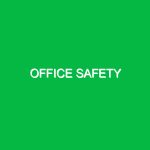In our daily lives, whether at home or in the workplace, the act of walking seems simple enough. However, lurking beneath this seemingly mundane activity are potential hazards that can lead to trips, falls, and serious injuries. Preventing trips is an essential component of Health, Safety, and Environment (HSE) protocols. Understanding the risks and implementing effective safety measures can drastically reduce the occurrence of these incidents. In this article, we will explore the significance of preventing trips, identify the hazards involved, discuss best practices, and highlight the relevant regulations that govern safety in this domain.
Understanding Preventing Trips and Its Relevance in HSE
Preventing trips involves taking proactive measures to eliminate or minimize the risk factors that contribute to tripping incidents. Within the HSE framework, preventing trips is not simply about avoiding accidents; it’s about fostering an environment where safety is prioritized, and individuals feel empowered to act with caution. This relevance cannot be overstated, as slips, trips, and falls remain a leading cause of workplace injuries, accounting for more than 30% of all reported incidents, according to the National Safety Council.
Moreover, the consequences of trips extend beyond immediate physical injuries. They can lead to prolonged absences from work, increased healthcare costs, and a decline in morale among employees. For organizations, the financial implications can be significant, impacting insurance premiums and productivity levels. Thus, understanding how to prevent trips is crucial not just for individual safety but also for the overall health of the organization.
Identifying Potential Hazards and Risks Associated with Preventing Trips
To effectively prevent trips, one must first recognize the various hazards that can lead to such incidents. These hazards can typically be categorized into physical, environmental, and procedural risks.
Physical Hazards
Physical hazards are the most commonly recognized. These include:
- Uneven Surfaces: Cracks in pavements, potholes, and uneven flooring can easily cause a person to lose their balance.
- Obstructions: Items such as boxes, tools, or equipment left in pathways create tripping hazards.
- Wet or Slippery Floors: Spills or cleaning activities can lead to slippery surfaces, increasing the risk of trips.
- Inadequate Lighting: Poorly lit areas can obscure hazards, making it difficult for individuals to see where they are walking.
Environmental Hazards
Environmental hazards can also contribute to trips, including:
- Weather Conditions: Rain, snow, and ice can create dangerous walking conditions, making surfaces slick and unstable.
- Outdoor Terrain: Natural terrains, such as hills or rocks, can pose risks, especially in construction or industrial settings.
Procedural Hazards
Procedural hazards arise from inadequate safety protocols, such as:
- Lack of Training: Employees who are not trained to recognize hazards are less likely to take preventive measures.
- Poor Maintenance: Failure to repair or maintain equipment and facilities can lead to increased risks.
Safety Precautions and Best Practices for Preventing Trips
Once the hazards are identified, implementing safety precautions is essential. The following best practices can help mitigate the risks associated with trips:
Conduct Regular Inspections
Regularly inspecting the workplace for potential hazards is crucial. This includes checking for uneven surfaces, ensuring pathways are clear, and addressing any issues with lighting. A routine walk-through can help identify problems before they lead to accidents.
Maintain Cleanliness and Organization
Keeping workspaces tidy is a fundamental practice. Ensure that all tools and materials are stored properly and that walkways are free of obstructions. Encourage a culture of cleanliness where employees feel responsible for maintaining their work environment.
Implement Proper Lighting
Improving lighting in work areas, particularly in stairwells and hallways, can significantly reduce trip risks. Consider installing motion-sensor lights in less-frequented areas to ensure visibility at all times.
Utilize Non-Slip Surfaces
In high-risk areas, consider using non-slip mats or coatings. These can greatly reduce the chances of slips when floors are wet or uneven.
Provide Proper Training
Training employees on recognizing hazards and understanding how to prevent trips is vital. Regular workshops and refresher courses can help instill a safety-first mindset among workers.
Encourage Reporting of Hazards
Create a system where employees can report hazards without fear of retribution. This proactive approach encourages individuals to take ownership of their safety and the safety of their colleagues.
Real-Life Examples of Preventing Trips in Action
Consider a manufacturing company, XYZ Corp, which once faced a high rate of workplace injuries due to trips. After conducting a thorough analysis, they identified several hazards: cluttered walkways, inadequate lighting, and a lack of employee training. The company took immediate action by implementing a weekly safety inspection, reorganizing workspaces, and improving lighting in dim areas.
The results were remarkable. Over the next year, XYZ Corp saw a 50% reduction in trip-related injuries. Employees reported feeling safer and more aware of their surroundings, which fostered a culture of safety that permeated the organization.
Regulations and Standards Governing Preventing Trips
Ensuring compliance with regulations is a critical aspect of preventing trips in any workplace. Several key standards are in place to guide organizations in maintaining safety:
Occupational Safety and Health Administration (OSHA)
OSHA provides guidelines and standards to ensure workplace safety, including stipulations for maintaining clear pathways and proper lighting in work areas. Employers are required to adhere to these standards to minimize the risk of trips and falls.
American National Standards Institute (ANSI)
The ANSI has established safety standards that provide frameworks for hazard identification and risk assessment. Following these guidelines can help organizations create safer environments.
National Fire Protection Association (NFPA)
The NFPA emphasizes the importance of clear egress pathways in its codes, which indirectly contributes to preventing trips by ensuring that exits are accessible and free from obstruction.
Conclusion
Preventing trips is a multifaceted challenge that requires a concerted effort from individuals and organizations alike. By understanding the potential hazards, implementing best practices, and adhering to established regulations, we can create safer environments for everyone. Whether it’s through regular inspections, employee training, or fostering a culture of safety, the steps we take today can significantly reduce the risks associated with trips in the future. Remember, safety is not just a priority; it’s a shared responsibility. Let’s work together to ensure that every step we take is a safe one.


